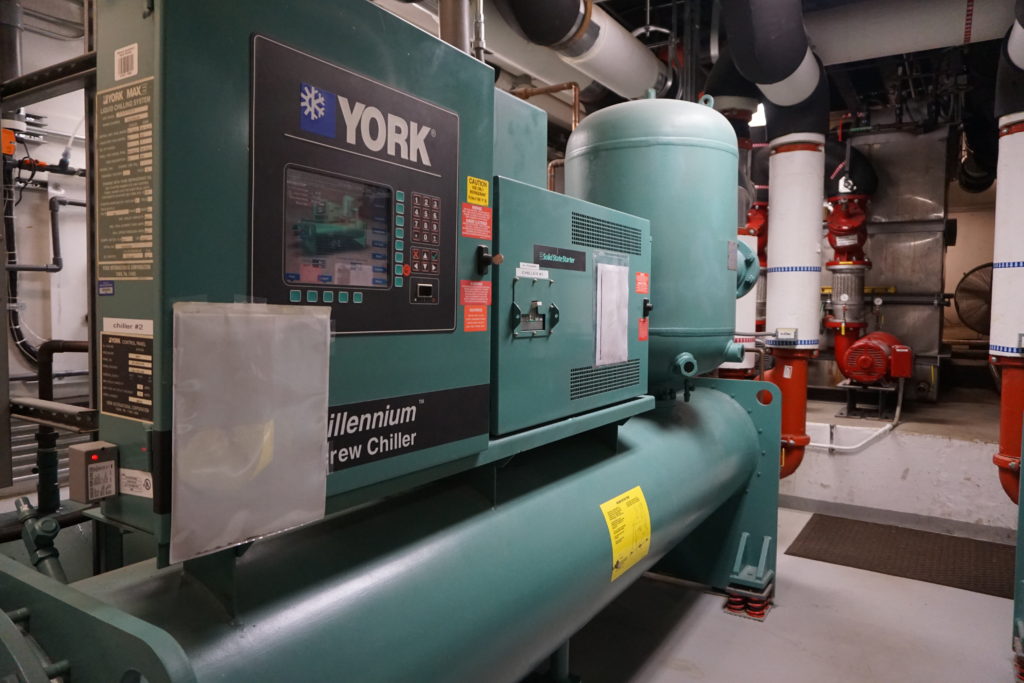Four Key Essentials of Data Center Cooling

As computing power continues to rise and servers require more and more electricity in much smaller footprints, providing sufficient cooling to keep IT gear operating has become a challenging task. At Global Access Point, we take cooling to the next level. Through the basics of active commissioning, real-time monitoring, preventative maintenance, and redundancy, we are able to provide our customers with the peace of mind that not only will we always keep the lights on, but we will always be able to provide the necessary cooling to keep their gear up-and-running, 24*7.
Active Commissioning
Commissioning is the comprehensive startup and testing of equipment by qualified technicians prior to being placed into production. This formal process ensures that site-specific training has been completed and accurate as-built documentation has been delivered. The commissioning process starts during the design phase to ensure design intent, and continues through factory acceptance tests, field progress inspections, functional performance tests, and integrated systems tests. Active commissioning ensures that all critical systems are reliable and perform individually and interactively in accordance with the basis of design, specifications, and the owner’s operational needs. For example, we perform a semi-annual integrated systems test, where we cut power to one of our two active feeds, and let the redundant system respond per its sequence of operations. It is an integrated systems test, meaning ALL the systems need to perform to its specific function in an emergency, such as a loss of power or a chilling component.
Real-Time Monitoring
Real-time monitoring is an important component in maintaining the availability of assets. Often the largest component in the mean time between failures is the time to recognize that a component or system has failed. Real-time monitoring greatly reduces the risk of an extended down time. In addition, by being able to monitor many data points from multiple systems, monitoring can often correlate minor alarms that might be a forewarning to more serious issues. Taking appropriate action when a rack power distribution unit sends an alarm for current above the warning level can prevent system downtime. Real-time monitoring also provides valuable information for use in capacity planning and provide insight helpful to achieving other strategic goals.
Preventative Maintenance
Preventive maintenance involves the inspection of equipment to detect potential failures before they occur. It is intended to prevent or reduce unplanned maintenance, and avoid costly downtime for the facility. It is analogous to regular check-ups with a doctor to help avoid an unplanned visit to the emergency room. Preventive maintenance might include the following actions:
- Replacement of parts
- Cleaning/changing of filters
- Lubrication of mechanical systems
- Firmware updates
- Measurement of key performance indicators
Preventive maintenance provides several important benefits. First, it can improve system performance. Trained service personnel can install the latest firmware, calibrate system parameters, and clean and service the system to ensure maximum performance. Often times they can also make recommendations on improving system performance or energy efficiency. Second, preventive maintenance can reduce unplanned downtime. Routine, timely maintenance is essential to ensure all equipment is functioning properly, and prepared to go into action if the need arises.
Redundancy
Our Tier 3 data center provides at least two paths for power and cooling distribution, and provides redundant components throughout the systems. This includes infrastructure which can be shut down for maintenance purposes without affecting the critical loads, and is referred to as “concurrently maintainable.” The goal is to eliminate any single points of failure, and provide backups for all critical systems. At Global Access Point we maintain a chilled water loop, which includes redundant water cooled chillers which are dependent on evaporative makeup water, and an independent glycol loop which has makeup water independent air cooled chilling systems. This redundancy within, and between multiple systems creates an added layer of protection for our facility, and more importantly, our customers.
If you found this information useful, please share this blog with others. Also, follow us on Facebook, LinkedIn, and Twitter for more tech industry news and updates! Or visit www.globalaccesspoint.com to learn more about the largest data center in Northern Indiana!
